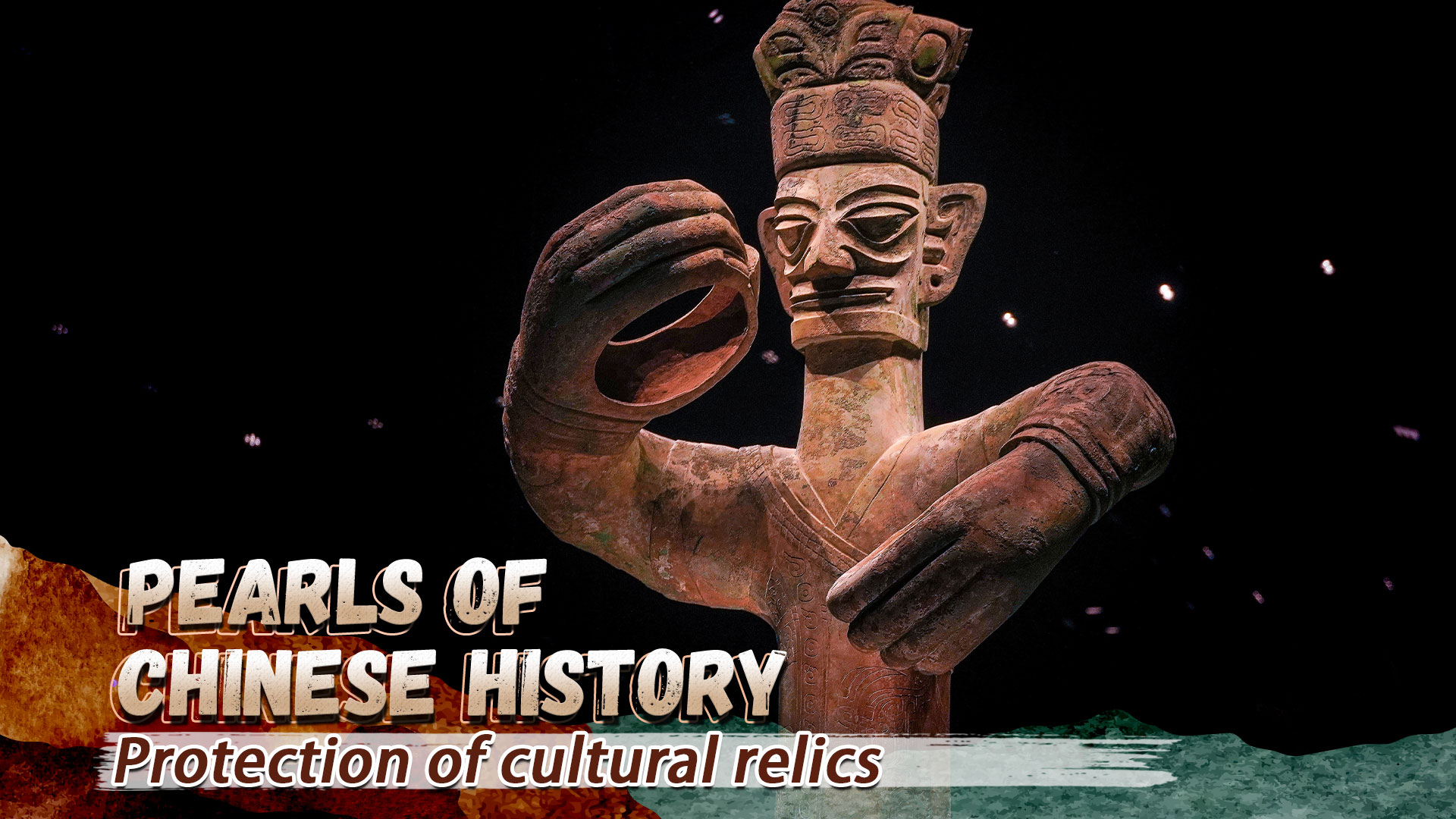
The 2.62-meter-tall bronze statue at Sanxingdui Museum, Guanghan, southwest China's Sichuan Province, March 7, 2021. /CFP
The 2.62-meter-tall bronze statue at Sanxingdui Museum, Guanghan, southwest China's Sichuan Province, March 7, 2021. /CFP
Editor's note: This is the third article of a series covering the repatriation and protection of China's cultural relics. You can find the first and the second piece here.
With a height of nearly four meters, a bronze tree stands out among the exquisite cultural relics in the Sanxingdui Museum. Known as the No.1 Bronze Sacred Tree, it is the largest bronze cultural relic ever found in China.
Guo Hanzhong, 55, is one of the restorers who helped the tree stand tall from over 200 broken tubes discovered in 1986, at the Sanxingdui Ruins in southwest China's Sichuan Province. It took Guo and his mentor Yang Xiaowu seven years to restore the bronze tree's splendor of 3,000 years ago.
"At first, we did not know how tall it was. From the bottom up, we put it together piece by piece, like completing a jigsaw puzzle," said Guo.
During his career spanning nearly 40 years, Guo has restored more than 6,000 cultural relics, accumulating valuable experience in restoration. The former apprentice now works as a mentor, coaching young colleagues while they study and restore pieces of history. Led by Guo, the team in the Sanxingdui Museum also incorporate new materials, 3D printing, AI and other high-tech means in their work.
Guo said there are no fixed steps in the restoration of cultural relics as the work needs to be done according to solid historical evidence.
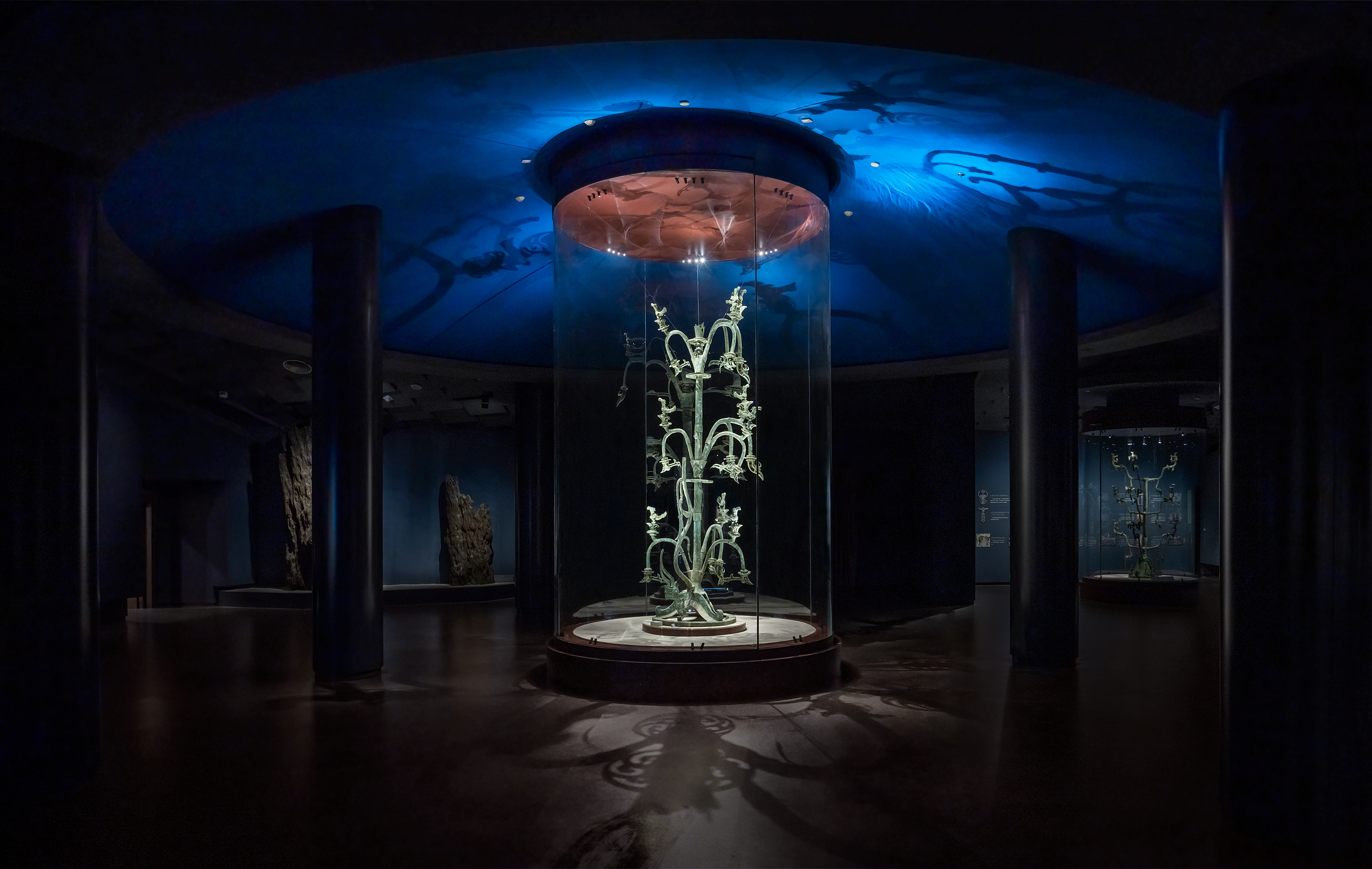
The No.1 Bronze Sacred Tree at Sanxingdui Museum, July 15, 2021. /CFP
The No.1 Bronze Sacred Tree at Sanxingdui Museum, July 15, 2021. /CFP
A new front
For Tang Shiwei, the value of cultural relics should not only be for the professionals in archaeology.
"Cultural relics witnessed various historical events, carrying the memory of world history," Tang said. "Their value should be known to a wider public."
With a degree from the school of archaeology and museology at Peking University, the 42-year-old has worked in the field of cultural heritage protection for over 15 years. Currently, Tang leads a young team, creating short videos about cultural relics or archaeological sites, with the goal of making museums popular among the public.
Launched in 2021, their account has gathered 520,000 followers on short video platform Douyin, China's version of TikTok.
Tang said a high percentage of followers were attracted by their humorous style, but humor is only one of the element of their videos. To prepare a short video about two or three minutes long, they need to read about 30 research papers to learn as much as possible about a particular cultural relic.
"It's like cooking a dish. Humor is the seasoning and accurate information is the main ingredient. Only a combination of the two can make high-quality and attractive contents," said Tang.
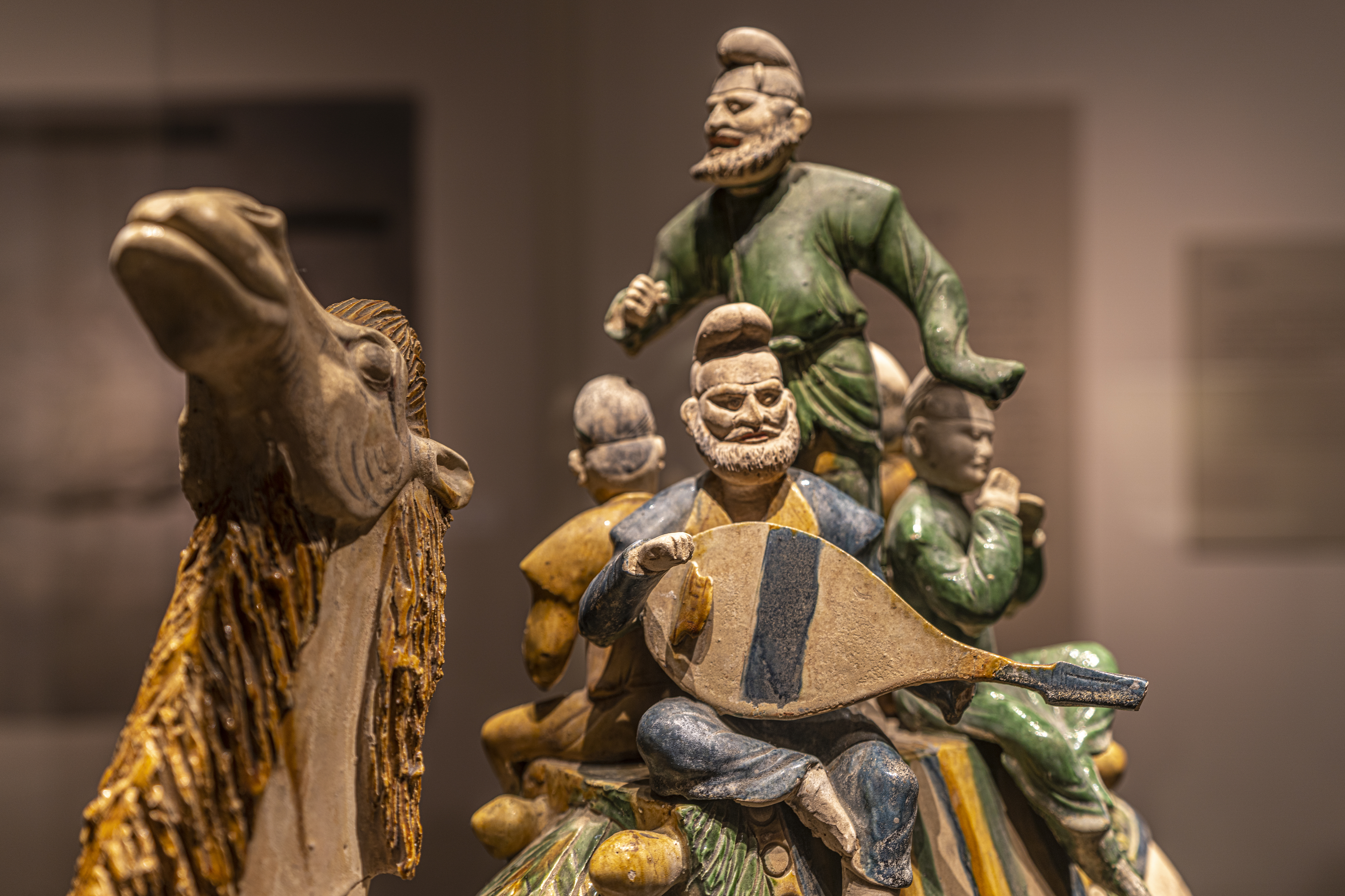
A tri-colored glazed pottery of the Tang Dynasty (618-907), National Museum of China, Beijing, China, April 4, 2022. /CFP
A tri-colored glazed pottery of the Tang Dynasty (618-907), National Museum of China, Beijing, China, April 4, 2022. /CFP
Taking the Ionic columns in Yungang Grottoes as an example, Tang pointed out that cultural relics can also be evidence of the exchanges of civilizations.
Ionic is one of three column styles that builders used in ancient Greece. The style traveled over 7,000 kilometers and reached Yungang Grottoes, one of the three most famous Buddhist grottoes sites in China.
Tang added that his team always include how civilizations collide, interact and influence each other when they introduce cultural relics.
So far, Tang's team has worked with over 100 museums to create professional and interesting introductions of cultural relics. Like Tang's team, vloggers who create short videos focusing on cultural relics are building a "bridge" for people who want to learn more about archaeology and museums.
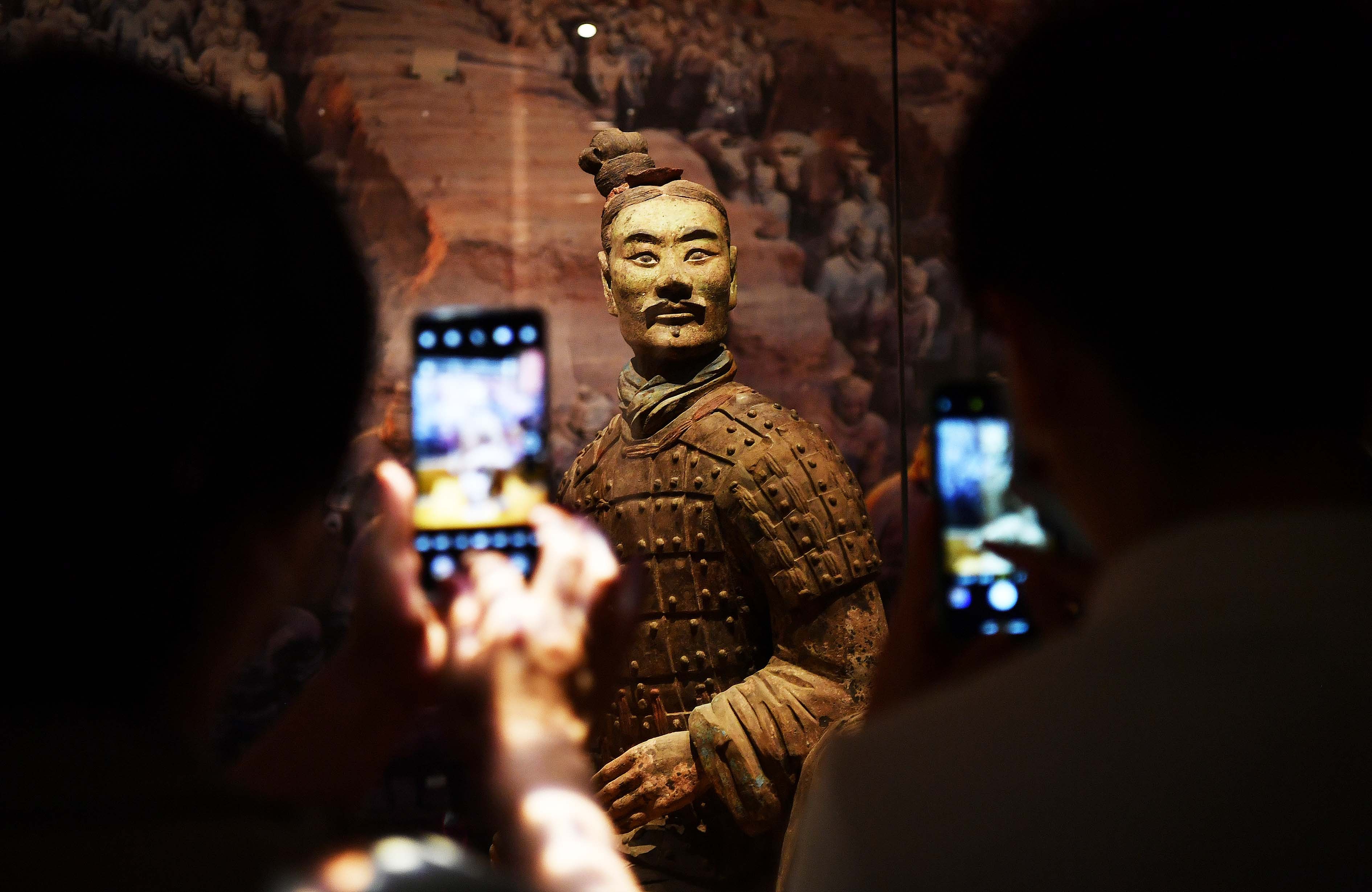
A terracotta warrior displayed at an exhibition on the protection of cultural relics, Capital Museum, Beijing, China, May 18, 2021. /CFP
A terracotta warrior displayed at an exhibition on the protection of cultural relics, Capital Museum, Beijing, China, May 18, 2021. /CFP
Popularity of museums
Housing countless cultural relics, museums across China are exploring new ways of getting closer to the public as well. Most of them have official accounts on social media platforms, creatively promoting the stories of their well-known pieces. Videos on topics related to museums have been watched billions of times on short video platforms.
From interactive applets to online exhibitions, museums are riding the wave of going digital as well. Data shows that nearly 10,000 online exhibitions and 40,000 online educational activities were launched in 2022, accumulating nearly one billion page views.
Cultural relics have also sparked creations in museums. From sweet desserts to toys, cultural creations have been designed and sold in many museums as souvenirs. Young people are the main buyers of these creative products.
These efforts in telling stories of cultural relics have contributed to the popularity of museums in China.
There are over 6,500 museums in China and 90 percent of them are open to the public for free. In 2022, Chinese museums held 34,000 exhibitions and nearly 230,000 educational activities, receiving 578 million visitors, according to National Cultural Heritage Administration.
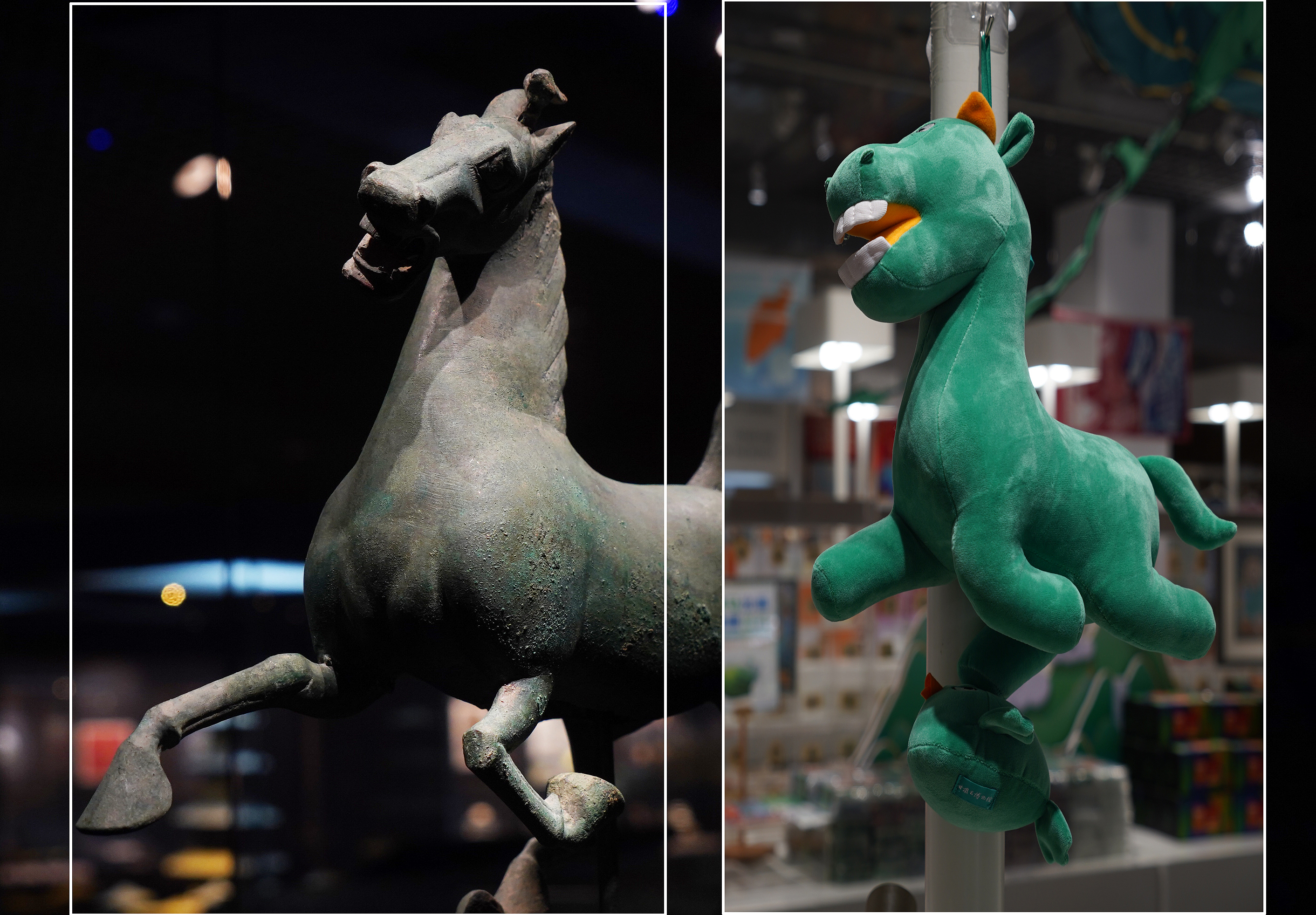
Comparison between the Bronze Galloping Horse and a toy based on the cultural relic, Lanzhou, northwest China's Gansu Province, June 28, 2022. /CFP
Comparison between the Bronze Galloping Horse and a toy based on the cultural relic, Lanzhou, northwest China's Gansu Province, June 28, 2022. /CFP